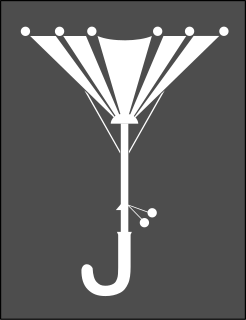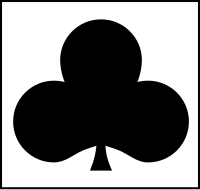
The King's African Rifles (KAR) was a multi-battalion British colonial regiment raised from Britain's various possessions in East Africa from 1902 until independence in the 1960s. It performed both military and internal security functions within the colonial territories, and served outside these territories during the World Wars. The rank and file (askaris) were drawn from native inhabitants, while most of the officers were seconded from the British Army. When the KAR was first raised there were some Sudanese officers in the battalions raised in Uganda, and native officers were commissioned towards the end of British colonial rule.

The 54th Infantry Division was an infantry division of the British Army. The division was raised in 1908 following the creation of the Territorial Force (TF) as the East Anglian Division. During the First World War the division fought at Gallipoli and in the Middle East. The division was disbanded after the war but reformed in the Territorial Army in 1920. During the Second World War it was a home service division and did not see any combat service abroad and was disbanded in late 1943 but many of its component units went to see service in the Normandy Campaign and North-western Europe from June 1944 to May 1945.

The 4th Infantry Division was a regular infantry division of the British Army with a very long history, seeing active service in the Peninsular War, the Crimean War, the First World War, and during the Second World War. It was disbanded after the war and reformed in the 1950s as an armoured formation before being disbanded and reformed again and finally disbanded on 1 January 2012.

The 5th Infantry Division was a regular army infantry division of the British Army. It was established by Arthur Wellesley, 1st Duke of Wellington for service in the Peninsular War, as part of the Anglo-Portuguese Army, and was active for most of the period since, including the First World War and the Second World War and was disbanded soon after. The division was reformed in 1995 as an administrative division covering Wales and the English regions of West Midlands, East Midlands and East. Its headquarters were in Shrewsbury. It was disbanded on 1 April 2012.

The 29th Infantry Brigade was an infantry brigade unit of the British Army. It was originally raised in 1914 and saw service during the First and Second World Wars and the Korean War.
The Second Battle of El Alamein order of battle is a listing of the significant formations that were involved in the Second Battle of El Alamein during the Western Desert Campaign of the Second World War, 23 October – 4 November 1942.

The 2nd (African) Division was a British Empire colonial unit that fought during the Second World War. On 19 July 1940, the 2nd (African) Division was formed in Kenya, British East Africa. On 24 November of that year, the division was redesignated as the British Army's 12th (African) Division. The 12th (African) Division was also known as the 12th Division when in October 1941 its West African brigade from the Gold Coast was reassigned and replaced with a third East African brigade. The division was disbanded in East Africa on 18 April 1943.
The Order of battle of the East African campaign shows the ground forces of both sides in East Africa on the date that the Italians declared war on Britain and France, 10 June 1940 and for the British and Commonwealth forces involved in the 1941 offensive.
This article supplements the 7th Armoured Division article by providing order of battle information for the division through various periods of the Second World War as the organization of an armoured division was changed by the War Office. Due to the experience gained in the Middle East these changes were sometimes present in the armoured divisions there before the War Office mandated organization. Parallel changes were made in the organization in the armoured brigades. The Division frequently did not match any organization scheme due to the lack of units in the Middle East.
In September 1939, the British Army was in process of expanding their anti-aircraft and mobile assets. Among these new changes was the formation of Anti-Aircraft Command which was formed on 1 April 1939, and the 1st Armoured Division formed in 1937. The list below will include the British Army units, colonial units, and those units which were in the process of formation.
The 157th Brigade was an infantry brigade of the British Army. The brigade fought in both the First and the Second World Wars, assigned to 52nd (Lowland) Infantry Division.

The 223rd Brigade was a Home Defence formation of the British Army in the First and the Second World Wars. It existed under several variations of the 223 Brigade title, and was eventually converted into an airborne formation.
The 225th Brigade was a Home Defence formation of the British Army in the First and the Second World Wars. It existed under several variations of the 225th Brigade title.
This page details the South African Army order of battle in 1940, before and after the formation of expeditionary forces.
The Order of battle, Keren 1941 shows Italian army forces that participated in the Battle of Keren from February to March 1941 and British troops in Sudan on 20 January 1941, which participated in military operations against Eritrea during the East African Campaign 1940–1941.
The 21st Infantry Brigade was a brigade sized formation of the British Army, which was founded on 31 August 1939 in British East Africa. The brigade was initially called the 1st Infantry Brigade, but was redesignated on 18 October 1940 as the 21st Infantry Brigade. The brigade was composed of units from the King's African Rifles and the Northern Rhodesia Regiment.
The 22nd Infantry Brigade was a brigade sized formation of the British Army, which was founded on 19 September 1939 in British East Africa. The brigade was initially called the 2nd Infantry Brigade, but was redesignated on 18 October 1940 as the 22nd Infantry Brigade. The brigade was composed of units from the King's African Rifles, the Northern Rhodesia Regiment and the Rhodesian African Rifles.
The 27th Infantry Brigade was a brigade sized formation of the British Army, which was founded on 18 September 1940 in Northern Rhodesia. The brigade was initially called the 7th Infantry Brigade, but was redesignated on 3 October 1940 as the 27th Infantry Brigade. In April 1945, the brigade was redesignated to the 27th Infantry Brigade.







